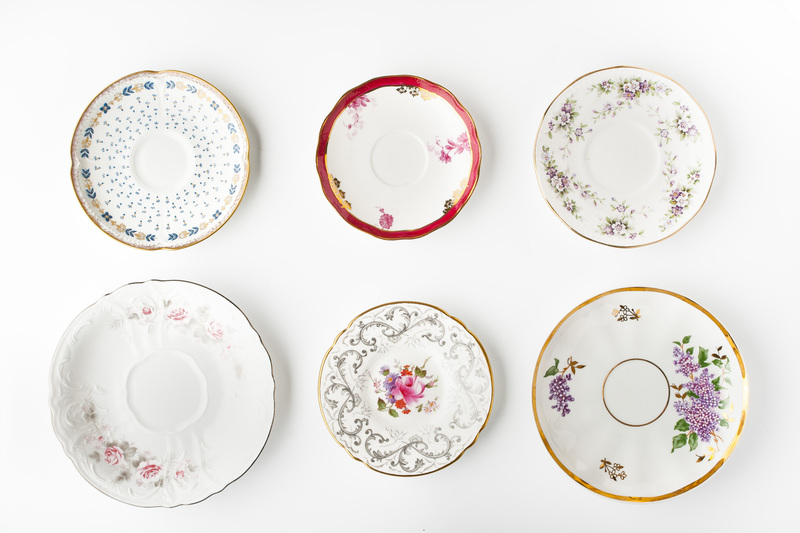Eco-Friendly Fashion: Recycling Your Worn Clothes
Eco-friendly fashion is more than a buzzword--it's a necessary shift in our relationship with clothing and the environment. In a world driven by fast fashion and consumerism, finding sustainable solutions for what we wear is crucial. One of the most effective ways to practice sustainability within fashion is recycling your worn clothes. This comprehensive guide explores why and how to embrace environmentally conscious fashion, offering actionable solutions to help you make a difference--one garment at a time.
Why Eco-Friendly Fashion Matters
The fashion industry is among the top contributors to environmental pollution, producing massive amounts of textile waste each year. With trends changing rapidly, clothes are discarded at alarming rates, filling landfills and increasing the strain on our planet's resources. By choosing eco-friendly fashion alternatives--such as recycling or repurposing old clothes--you can significantly reduce your carbon footprint and support a healthier planet.
- Environmental Impact: The global production and disposal of textiles contribute to greenhouse gas emissions, water pollution and microplastic contamination.
- Social Responsibility: Ethical recycling practices promote fair labor, resource conservation, and community well-being.
- Financial Savings: Upcycling or donating clothes not only saves money but can also help others in need.
The Shocking Statistics Behind Textile Waste
Did you know that the average American throws away over 80 pounds of clothing every year? According to the EPA, textiles make up nearly 7.7% of landfill waste in the United States. Only 15% of used clothing is recycled or donated--the rest is incinerated or sent to landfills, where synthetic fibers can take up to 200 years to decompose.

Ways to Recycle Your Worn Clothes
Recycling your clothes doesn't always mean tossing them in a bin for someone else to sort out. There are several eco-friendly fashion practices to consider that extend the life of your garments and keep them out of landfills.
1. Clothing Donation
Donating old clothes is a convenient and impactful way to help communities and the environment. Many charities and non-profit organizations accept gently worn clothes and distribute them to people in need. Popular options include:
- Local shelters
- Goodwill and The Salvation Army
- Dress for Success
- Vietnam Veterans of America
Ensure your donations are clean, in good condition, and sorted by type to maximize their usefulness.
2. Clothing Swap Events
Clothing swaps offer a fun, social, and eco-conscious way to refresh your wardrobe. Gather friends, coworkers, or community members to exchange clothes you no longer wear.
- Reduces environmental impact by circulating existing clothing
- Encourages mindful consumption
- Potentially discover unique and stylish finds
3. Textile Recycling Centers
For items beyond repair, textile recycling centers provide a responsible solution. These facilities repurpose unusable clothing into:
- Industrial rags
- Insulation material
- Carpet padding
- Automotive stuffing
Check with your local waste management facility or search online directories for textile recycling drop-off points in your area.
4. Upcycling and DIY Projects
Upcycling creatively transforms old garments into something new and functional. Got a favorite t-shirt with holes? Turn it into a tote bag, cushion cover, or headband! Other DIY ideas include:
- Quilting with fabric scraps
- Patchwork clothing or accessories
- Reusing buttons, zippers, or trims
5. Brand Take-Back Programs
Many clothing brands are embracing eco-conscious fashion by offering take-back or recycling programs. Notable participants include:
- H&M's Garment Collection Program
- Patagonia's Worn Wear
- Levi's Recycling Campaign
- Madewell's Denim Recycling
Check your favorite brands' sustainability pages for recycling initiatives and instructions.
How Clothes Are Recycled
Textile recycling is a vital part of the circular fashion movement. The process begins with sorting and grading, then proceeds in one of two directions: reuse or material recovery.
Sorting and Grading
- Rewearable Clothes: High-quality garments are cleaned and resold in second-hand markets.
- Recyclable Fabrics: Damaged or lower-quality textiles are categorized by fiber type for recycling.
Mechanical and Chemical Recycling
- Mechanical Recycling: Clothes are shredded into fibers, which can be spun into new yarn and fabrics. This works best with pure, natural fibers like cotton or wool.
- Chemical Recycling: Advanced processes break down synthetic fibers, such as polyester, into raw materials for reuse. This technology is evolving but holds tremendous promise for tackling textile waste at scale.
Challenges and Opportunities in Eco-Friendly Clothing Recycling
Barriers to Textile Recycling
- Mixed Fibers: Many modern garments are made from blended fabrics, complicating the recycling process.
- Labels, Zippers, and Embellishments: Non-textile components must be removed, raising costs and labor requirements.
- Lack of Infrastructure: Not all areas have accessible clothing recycling centers.
- Consumer Awareness: Education gaps mean many individuals don't know how or where to recycle textiles.
Opportunities for a Greener Fashion Future
- Innovations in Fabric Design: The development of single-fiber, biodegradable fabrics makes recycling easier and more effective.
- Digital Platforms: Apps and online directories connect users to recycling points and education resources.
- Policy Changes: Increasing government and industry regulations are pushing manufacturers to prioritize sustainability.
With the right strategies and collective efforts, eco-friendly fashion can become the norm rather than the exception.
Tips for Sustainable Fashion and Clothing Care
Before you recycle, consider how your everyday habits influence the life cycle of your clothes. Here's how to be proactive in supporting eco-friendly fashion:
- Buy Quality, Not Quantity: Choose garments that are durable and timeless rather than trendy and disposable.
- Care for Your Clothes: Wash items only when necessary, use cold water, and air dry to extend garment life and save energy.
- Repair Rather Than Replace: Mend small tears, replace buttons, or sew patches to keep clothing in use longer.
- Support Ethical Brands: Shop from companies committed to sustainable materials, fair labor practices, and recyclable or biodegradable packaging.
- Share the Message: Talk to friends and family about the importance of sustainable fashion and recycling your worn clothes.

The Rise of Circular Fashion
Circular fashion is a model where clothing is designed, produced, and consumed in a way that keeps products, materials, and resources in use for as long as possible. Recycling worn clothes is a cornerstone of this movement. When done properly, it:
- Reduces waste and pollution
- Conserves energy and natural resources
- Empowers individuals to engage directly in positive environmental action
- Supports transparent, ethical, and innovative business models
Major brands and start-ups alike are investing in technologies and systems to support clothing take-back, upcycling, and eco-friendly recycling processes. By participating as a consumer, you contribute to the demand for responsible fashion.
Consumer Power: Making Informed Choices
Every purchase sends a signal to the fashion industry. By choosing brands that prioritize sustainability, recycling, and ethical sourcing, you amplify the movement towards a greener fashion economy. Look for certifications like:
- Global Organic Textile Standard (GOTS)
- Fair Trade Certified
- Cradle to Cradle Certified
These labels reflect a commitment to sustainable, eco-friendly apparel production and recycling practices.
Conclusion: Your Role in Eco-Friendly Fashion
Eco-friendly fashion is an attainable goal for everyone--no matter your budget or style preference. Recycling your worn clothes is a powerful way to protect the planet, limit waste, and foster a more responsible society. Whether you donate, upcycle, or drop off garments at recycling centers, every action counts. Make eco-friendly choices today and inspire others to do the same. The future of fashion is in your hands, and together, we can transform the industry for generations to come.
Ready to Start?
Begin sorting your closet, research local recycling programs, and spread the word about sustainable fashion practices. Your journey towards a cleaner, greener, and more ethical wardrobe starts now!